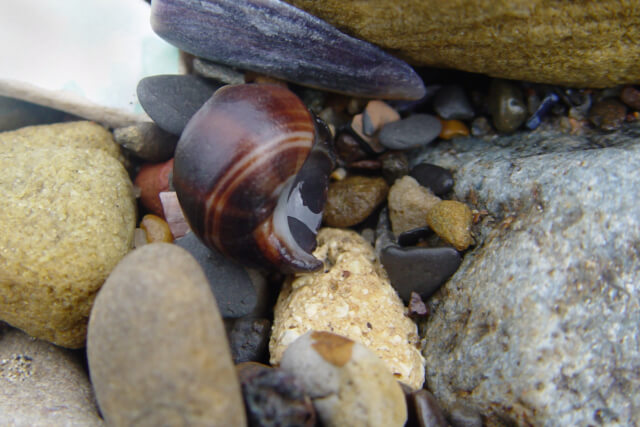The Ultimate 2025 Guide to the Best Beaches in the UK
Looking to explore some of the best beaches in the UK this summer, but you’re overwhelmed with choice? Don’t...

From its association with Bram Stoker’s Dracula to its stunning abbey ruins, Whitby boasts a tapestry of fame that continues to allure travellers from around the world.
Nestled between the North York Moors National Park and the North Sea, this charming destination offers a myriad of attractions that have captivated visitors for centuries.
Join us as we explore eight fascinating reasons why Whitby is famous…

Dominating the town’s skyline, the hauntingly beautiful Whitby Abbey is undoubtedly one of the most iconic landmarks in the United Kingdom.
With its Gothic architecture and dramatic cliff-top setting, the abbey serves as a vivid reminder of Whitby’s medieval past. It is famously linked to Bram Stoker’s renowned novel, “Dracula,” as the author found inspiration for his vampire tale during a visit to Whitby.
Exploring the abbey ruins and soaking in the panoramic views of the coastline is an unforgettable experience.
Looking for more things to do in Whitby? Take a look at our Whitby travel guide to find all the information you will need!

Whitby is closely associated with Captain James Cook, one of history’s greatest explorers. It was in Whitby that Cook first set sail aboard the HMS Endeavour on his famous voyage to the Pacific.
Today, you can explore the Captain Cook Memorial Museum to learn more about his remarkable life and adventures.
Housed in the former residence where Cook stayed as an apprentice, the museum showcases his life, voyages, and contributions to navigation and scientific exploration. It offers an intriguing glimpse into the maritime history of Whitby and the world of exploration.

Whitby holds a significant place in the history of whaling. During the 18th and 19th centuries, the town played a vital role in Britain’s whaling industry.
The town’s skilled sailors and shipbuilders constructed sturdy vessels, known as Whitby Whalers, which were specifically designed for hunting whales. These ships ventured into treacherous waters, hunting whales for their valuable blubber and oil.
The success of the whaling industry brought prosperity to Whitby, shaping its maritime heritage.
Today, visitors can explore the Captain Cook Memorial Museum and learn about the town’s whaling legacy, showcasing Whitby’s deep connection to this historic industry. This is just one of the many things to do in Whitby.

The coastal town of Whitby holds a captivating connection to the world of literature through its association with Bram Stoker’s timeless Gothic novel, “Dracula.”
This intriguing link has added an aura of mystery and allure to Whitby, attracting countless visitors who seek to explore the places that inspired Stoker’s immortal vampire tale. Its gothic connections have also inspired the world-famous Whitby Goth Weekend.
Whitby’s most prominent Dracula connection lies in the haunting ruins of Whitby Abbey. It was during a visit to Whitby in 1890 that Stoker, inspired by the eerie ambience and the abbey’s Gothic architecture, is said to have found inspiration for some of the most iconic scenes in his novel.

The 199 steps in Whitby are an iconic and historic feature of the town. These stone steps wind their way up the East Cliff, leading visitors and locals to the impressive ruins of Whitby Abbey.
Ascending the steps, one feels a sense of anticipation and adventure, as the breath-taking views of the harbour and coastline gradually unfold.
The steps have become a symbol of Whitby’s charm and allure, attracting tourists from around the world.
Steeped in history and folklore, the 199 steps provide a physical and metaphorical journey, transporting visitors back in time and offering a glimpse into the town’s rich past.

If you’re still wondering ‘What is Whitby famous for?’ as our next Whitby fact is sure to impress!
According to local legend, Maggie was a ghostly figure who roamed the streets of Whitby during the 18th century. Tales describe her as a woman in a tattered dress, her long hair flowing in the wind.
It is said that she would appear to sailors before a storm, warning them of impending danger. Some believe Maggie was the spirit of a woman lost at sea, forever bound to Whitby.
Whether rooted in truth or purely the product of imaginative storytelling, the myth of Maggie of Whitby continues to captivate locals and visitors, adding an ethereal charm to the town’s allure.

Whitby’s fish and chips have achieved legendary status, drawing food enthusiasts from far and wide. Renowned for their exceptional quality and taste, the town’s fish and chips are a must-try culinary delight.
The chefs use locally sourced, fresh catch from the North Sea to coat the fish in a light, crispy batter and serve it alongside perfectly golden chips. The combination of flaky, succulent fish and the satisfying crunch of the chips is simply irresistible.
Whether enjoyed while strolling along the picturesque harbour or savoured in one of Whitby’s cosy seaside eateries, the famous fish and chips of Whitby provide a mouthwatering experience that showcases the town’s rich maritime heritage.

Concluding our guide to what makes Whitby famous is quite a gem!
Whitby Jet is a unique gemstone that holds a special place in Whitby’s history and culture. Whitby Jet, with its distinctive deep black colour, has attracted covetousness and skilled craftsmanship for centuries, resulting in the creation of exquisite jewellery.
The gem’s association with the town has made it an iconic symbol of Whitby’s heritage. Visitors can explore local shops and galleries to admire the intricate designs and craftsmanship of Whitby Jet jewellery.
Owning a piece of this fascinating gem allows one to carry a tangible piece of Whitby’s rich legacy with them.
Feeling inspired to experience many of Whitby’s gems? Find your ultimate self-catering holiday cottage in Whitby here. For fascinating days out in the area, browse our Yorkshire Travel Guide.
Are you on the phone to our call centre? Your Customer ID is:
Get involved in the Discussion